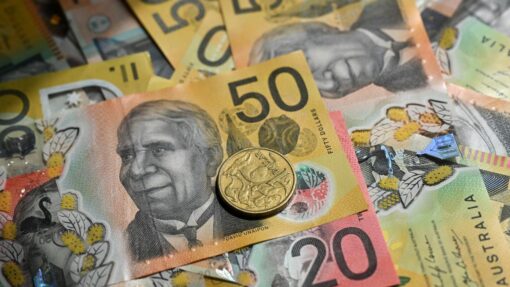New Zealand spends up, posting billion-dollar deficit
Ben McKay |

New Zealand will post a $7 billion deficit and spend another year in the red to pay for the fallout from Cyclone Gabrielle and devastating Auckland floods.
But Finance Minister Grant Robertson was upbeat the country would avoid a forecast recession this year and soon put its inflationary nightmare in the rear-view mirror.
Fresh Treasury forecasts have the headline inflation rate returning to three per cent by September 2024 and back within the Reserve Bank’s target band.
Releasing his sixth budget on Thursday, Mr Robertson found space for infrastructure spending and cost-of-living relief, including $NZ1.2 billion ($A1.1b) of childcare support as a centrepiece.
A rebate available for three- to five-year-olds will be expanded to two-year-olds, saving parents up to $NZ133.20 ($A128.30) a week.
A $NZ5 ($A4.70) co-payment for almost all prescribed medications will be scrapped, meaning most common scripts will be free.
In another win for families, public transport will be free for under-13s and half-price for 13- to 24-year-olds.
“It signals our priority to ease cost-of-living pressures, while also delivering policies that will support people to be in the workforce,” Mr Robertson said.
The measures are in keeping with Prime Minister Chris Hipkins’ pledge to run a “bread and butter” government and deliver a “no frills” budget.
“It’s tough for families right now,” Mr Hipkins said.
However, perhaps with an eye to the October 14 election, there is more borrowing and spending in the budget than envisaged.
Mr Robertson has grown the operational and capital expenditure budgets he set himself, requiring Treasury to issue more debt than expected.
Economists believe that will swell inflationary pressures, leading the Reserve Bank to tighten rates for a 12th successive time when it meets next week.
Mr Robertson argues the spending is necessary in the wake of the Auckland floods and Gabrielle, which he says is the second most costly natural disaster the country has ever faced.
The budget creates a new $NZ6 billion ($A5.6b) National Resilience Plan to fund the rebuild and includes $NZ71 billion ($A67b) worth of infrastructure spending – on schools, hospitals, public housing, road and rail – in the next five years.
Mr Robertson was adamant the budget would not fuel inflation.
“We’ve carefully calibrated our responses to help people, but not make that main problem worse,” he said.
Treasury believes the storms produced $NZ9-14.5 billion ($A8.5-13.6b) worth of physical damage and will cost New Zealand $NZ1 billion ($A940m) in lost exports.
Repairing and replacing damaged or destroyed homes will cost almost $NZ2 billion ($A1.9b) alone.
But increased spending in the wake of the storms might be what tips New Zealand out of the economic mire.
Gross domestic product fell by 0.6 per cent in the last quarter of 2022 and another contraction would see New Zealand enter recession.
Treasury now forecasts anaemic growth in each quarter of 2023, totalling just over one per cent for the year.
In a surprise move, the government has also included a tax hike for high-wealth individuals who use trusts.
It has brought the top trustee tax rate of 33 per cent in line with the top income tax rate of 39 per cent, a move that will earn the government $NZ1.1 billion ($A1b) over four years.
The headline deficit of $NZ7 billion ($A6.6b) is 1.8 per cent of GDP, with a return to surplus kicked out to 2025/26.
It is the second straight year Mr Robertson has pushed out a return to the black, meaning New Zealand will post at least six years of deficits following COVID-19.
AAP


